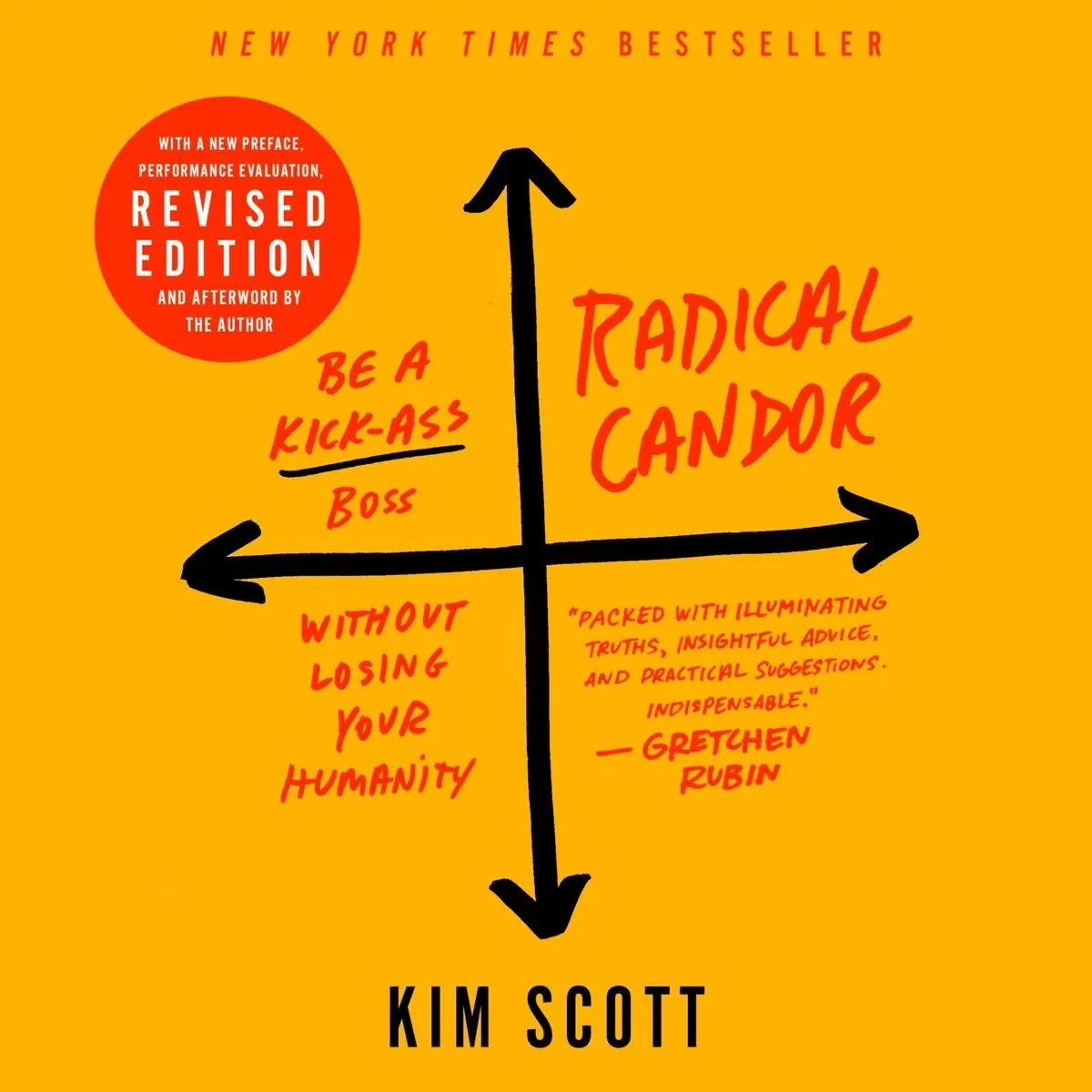"Radical Candor" by Kim Scott 📚

It’s pretty much back to work at Innovation Copilots after a hectic few last months. To get back in the groove of writing and sharing ideas on innovation and strategy on the blog, I thought I would start with a few books that were part of my summer’s reading.
Radical Candor, the first one on the list, was pretty much a joke on me, as I must admit that for more than a decade, my personal brand has been about dealing with radical honesty. Being involved with startups or corporations needing rapid turnarounds on key strategic issues, my customers tend to have a great sense of urgency and have different priorities than managing their own sensitivity (or mine for that matter) when sharing feedback.
In that regard, Scott’s book is interesting… with a few caveats. The core pitch is that most work relations tend to navigate confrontational power plays or dysfunctional introvercy and insincerity. Scott is proposing that there’s actually a better way™️ that combines telling the truth (always) and building real care and empathy. In theory, when both are combined, the sharp edges of truth will always be understood in a context of genuine care and allow for actionable feedback.

As most self-improvement/management books, this one is coming with all the credentials you need (the author is a rock star Silicon Valley’s manager) and a full set of workshops and certifications to follow-up (which will probably look amazing on your Linkedin profile). So yes, it ends up being a long book that goes on and on about the same idea with too many examples and a very “one-size-fits-all” approach. But you’ve read American business books already, and you know how they are.
What was interesting, though for me, was the approach of creating a safe communication zone at work. I’m not sold on the idea that a company could work 100% of the time in radical candor mode. That would be downright exhausting, cause too many difficulties for many personality types in the staff… And don’t even start me with the multicultural side of the equation. But I do believe, though, that some spot bubbles of radical candor are necessary. If they should be the norm when evaluating employees once in a while, they also could be more normalized in the context of the project’s team working on critical issues. In that regard, the book offered a lot of context and techniques to build and improve on what was quite an intuitive (and as such sometimes clumsy, or at least inefficient) practice.
One of the key ideas of radical candor that seems deceptively simple is that you can only afford a candor level that is proportional to the level of empathy you have. Put in a broader context, the question that should be kept in mind is, “does my honesty provide something valuable and actionable to this person?”.

Another key idea is that radical candor should go both ways independently of hierarchy as a measured practice. In which case it can encourage confidence between coworkers and build up more horizontal relationships throughout the company. And as much as this might translate very poorly in some work culture, this could be precisely interesting as a way to alleviate some aspects of these very same cultures (think France, UK, China, or Japan).
There’s also the positive side of radical candor. For many years I’ve used simple thermodynamics: if I’m not afraid to tell you that something is terrible when I tell you something is really good, it’s also coming from a very genuine place. But it’s never that easy. Being on the receiving end of positive feedbacks is often surprisingly difficult. People will try to read something else beyond the compliment. There’s an educated paranoia in numerous business cultures that you develop when people seem to be too nice. Alternatively, even well structured positive feedbacks might just be discarded as plain superficial cheerleading. And I’ve found that the book was also quite good at laying out solid principles to create a safe and effective zone for this.
Would I recommend you read it? Yes and no.
Well, for one, the book is way too long unless you’re the CEO of a company, and you’re determined to invest 3 to 5 years in a transformational plan with your HR team. The first chapters are nonetheless very interesting in laying out clear principles to understand the potential uses of radical candor and how to walk a fine line with it. Many other chapters are dealing with specific use cases that might be interesting for your own management process, such as team collaboration, performance reviews, hiring, and so on.
One of the concerns I have with the book is the 100 pages-long afterwords of the 2019 revised edition I read. You feel that the author had to deal with quite a lot of pushback on the simple practicality of it all (up to her own daughter — which is comical or very sad, depending on your perspective).
So again, in my perspective, a very smart and effective book to extend your personal toolkit at dealing with people (who doesn’t need that?). Just keep in mind that the author is possibly way too enthusiastic about when you should use it
For small teams working on critical innovation projects? You should be 100% in.


